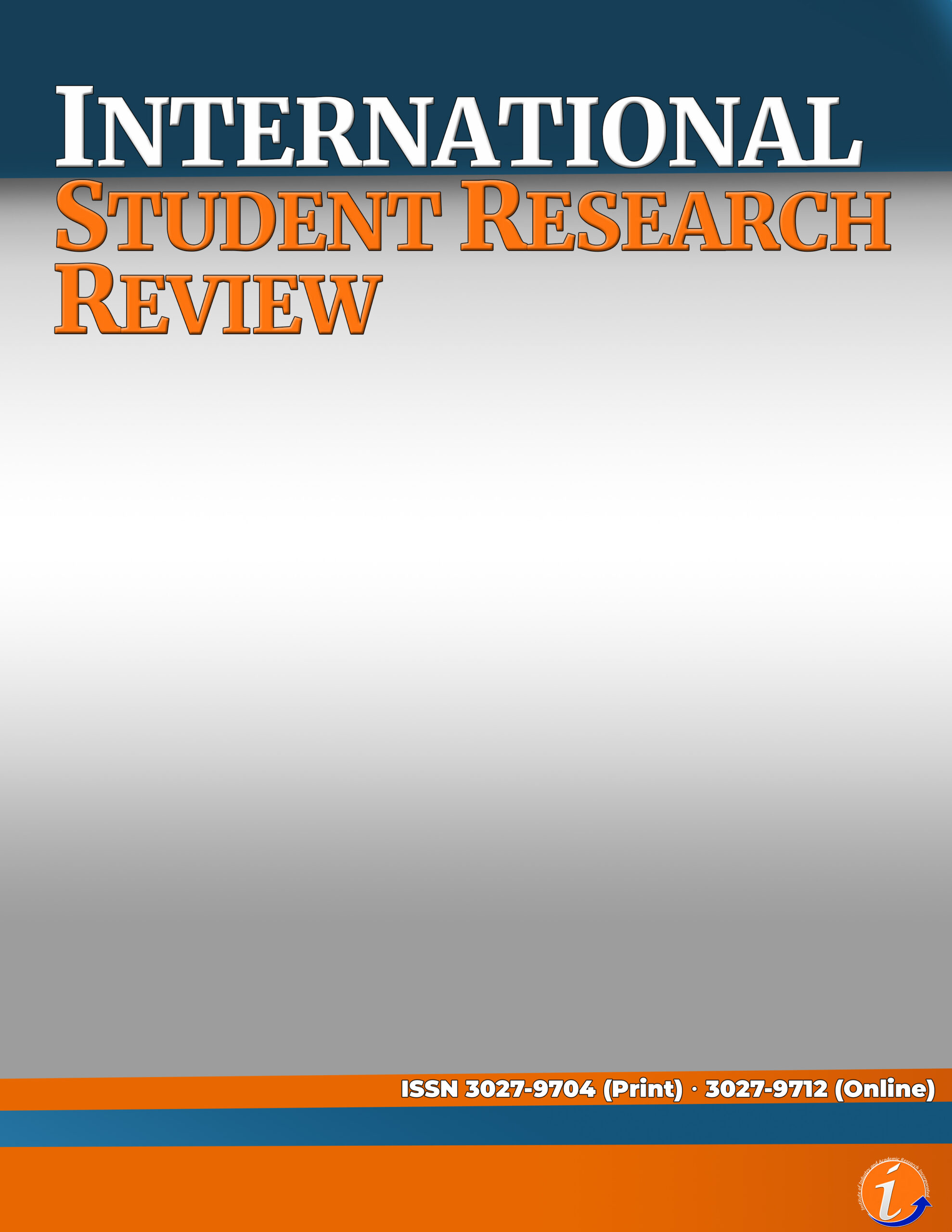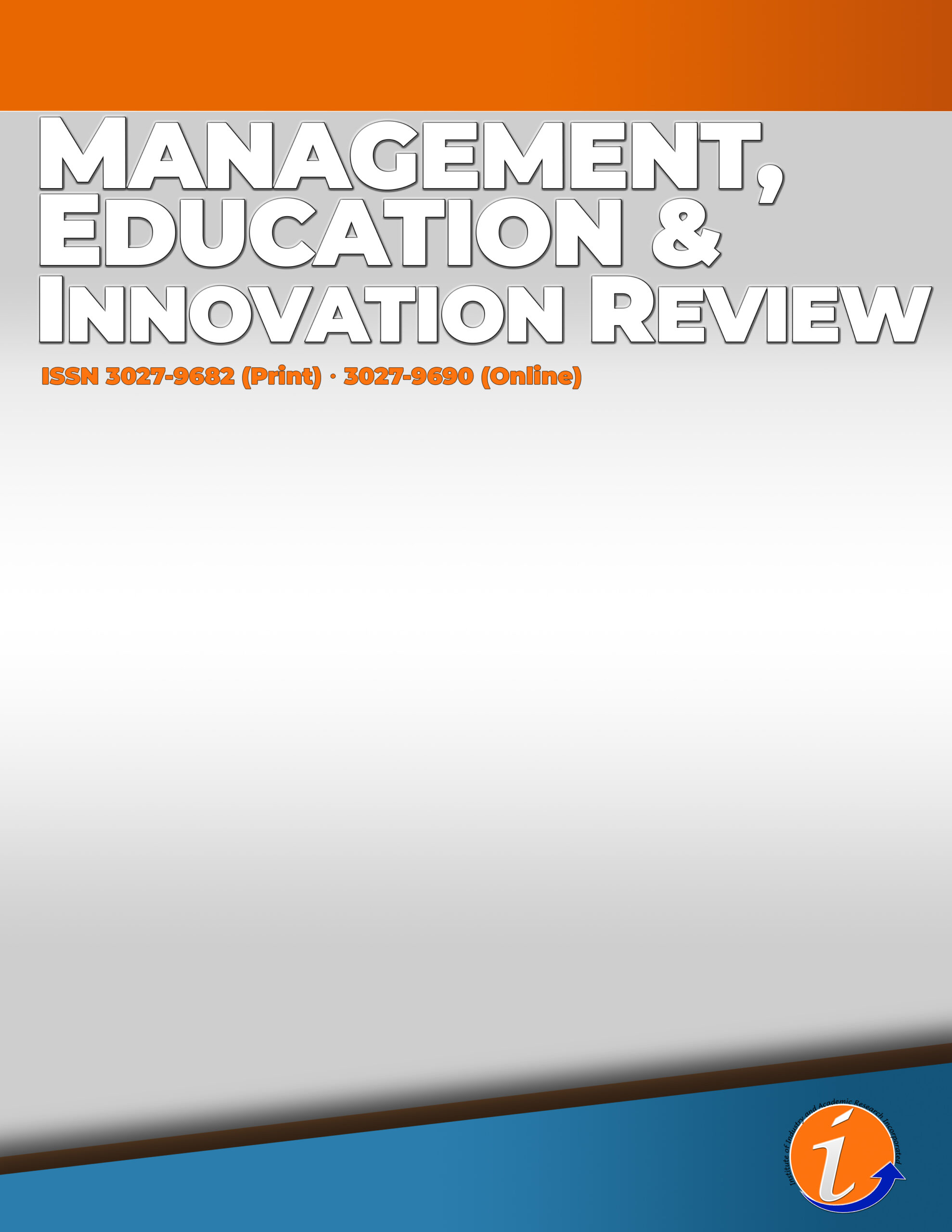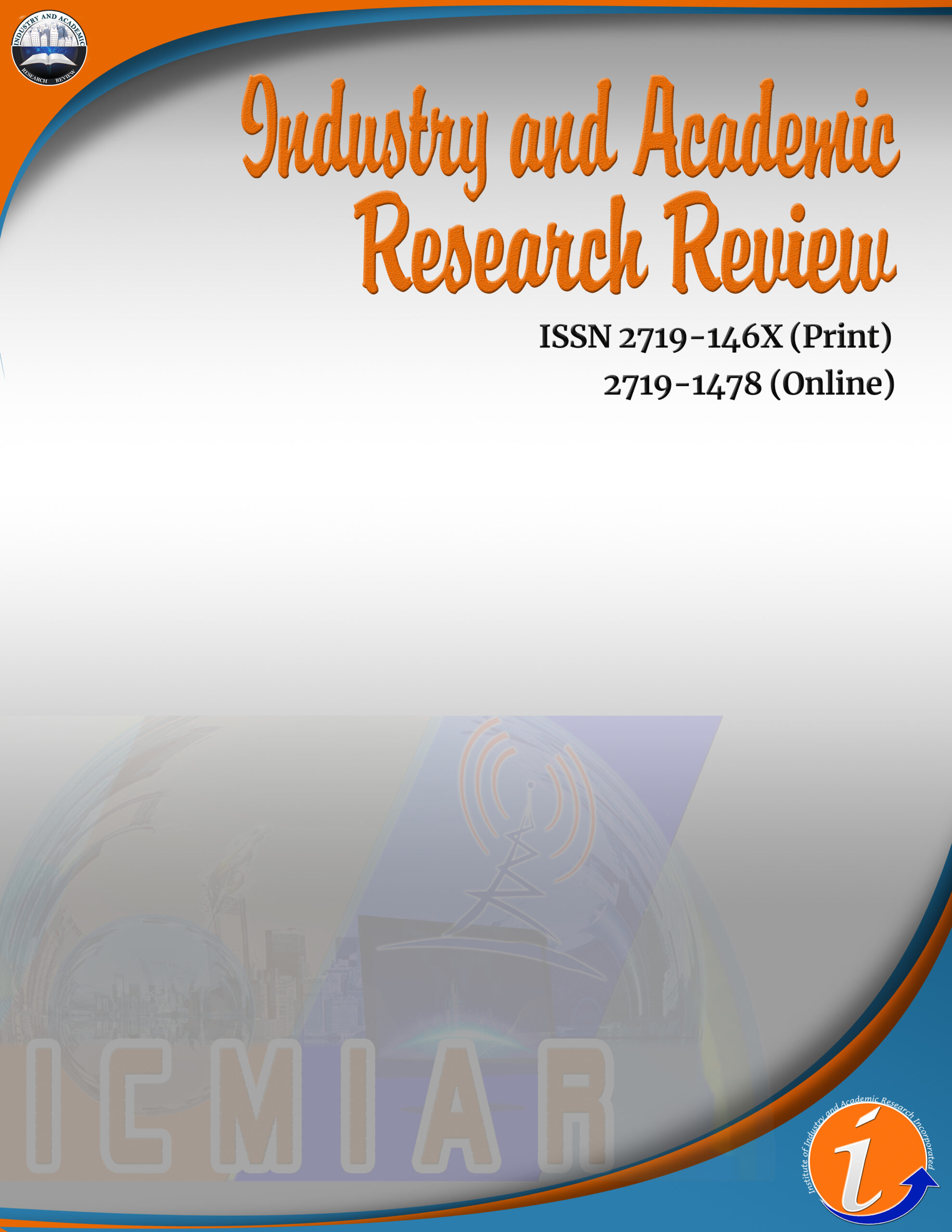English reading comprehension is a core competency that underpins significant contribution to the advancement of academic skills in all subjects. This study determined the impact of interactive e-storybooks conceptualized as readily accessible digital stories to improve, foster, and yields reader’s comprehension (READIFY) enhancing Grade 5 learners’ English reading comprehension skills in a public elementary school in the Philippines during S.Y. 2024-2025. The study utilized a quantitative approach, collecting data from survey questionnaires and pre-test and post-test assessments. Statistical tools such as mean and standard deviation were used to determine the material’s efficiency in improving the learners’ English reading comprehension skills. A T-test was employed to determine if there is a significant difference between the students’ level of English reading comprehension skills before and after the intervention. The findings showed that READIFY intervention led to significantly enhanced reading comprehension skills among Grade 5 pupils. Pre-test scores (81.2%) indicated an instructional level while post-test scores (64.7%) demonstrated an independent level, signifying a marked improvement in their ability to read and understand the material. The statistical evidence supports the program's efficacy and highlights its potential as a valuable tool for educators seeking to enhance language learning outcomes.
interactive, e-storybooks, English reading, comprehension skills, enhance, grade 5 learners
Angelo B. Arellano. Undergraduate student. Laguna University.
Honey Mist A. Salvador. Undergraduate student. Laguna University.
Mitchie Mae L. Barrios. Undergraduate student. Laguna University.
Romelyn D. Ramos. Corresponding author. Undergraduate student, Laguna University. Email: ramosromelyn002@gmail.com
Rosemarie S. Badillo. Undergraduate student. Laguna University.
Jovelle M. Reyes. Master of Arts in English. Instructor - Laguna University
Rose Nannette J. San Juan. Master of Arts in Mathematics. Instructor - Laguna University
"Author 1 was primarily responsible for the design and development of evaluation instruments that was utilized in the study, including the pre-test and post-test assessment. Author 2 and Author 3 conducted a systematic and comprehensive seeking of review of related literature to look for existing studies the will contribute and support the study. Author 4 and Author 5 played a central role in conceptualizing and finalizing the research design and the research framework. Author 6 have meticulously checked the overall manuscript to identify grammatical errors and inaccuracies, this substantial part helped to enhance the clarity, coherence, and the structure of the paper. Author 7 undertook a detailed review of the results of pre-test and post-test, and performed statistical computations using appropriate software tools, and conducting preliminary statistical analyses to support the study’s findings."
No potential conflict of interest was reported by the author(s).
This work was not supported by any funding.
AI tools were not used in writing this paper.
This paper is presented in the 2nd International Student Research Congress (ISRC) 2025
Asrowi, A., Hadaya, A., & Hanif, M. (2019). The impact of using the interactive E-Book on students’ learning outcomes. International Journal of Instruction, 12(2), 709–722. https://doi.org/10.29333/iji.2019.12245a
Asrowi, Hadaya, A., & Hanif, M. (2019). The impact of using the interactive e-book on students’ learning outcomes. International Journal of Instruction, 12(2), 709-722. https://doi.org/10.29333/iji.2019.12245a
August, D.L., Carlson, C.D., & Barr, C.D. (2024). COLLTS: a promising interactive read-aloud intervention for three-year-old dual-language learners. Early Childhood Educ J 52, 515–525. https://doi.org/10.1007/s10643-023-01447-1
Butterfuss, R., Kim, J., & Kendeou, P. (2020). Reading comprehension. Oxford Research Encyclopedia of Education. https://doi.org/10.1093/acrefore/9780190264093.013.865
Cole, M.W., Dunston, P.J. & Butler, T. (2017). Engaging English language learners through interactive read-alouds: a literature review. English Teaching: Practice & Critique, 16(1), 97-109. https://doi.org/10.1108/ETPC-11-2015-0101
Continental Press. (2024). The benefits of interactive read-alouds in educational settings. https://continentalpress.com/interactive-read-alouds
Day, S. L., Hwang, J. K., Arner, T., McNamara, D. S., & Connor, C. M. (2024). Choose your own adventure: Interactive e-books to improve word knowledge and comprehension skills. arXiv. https://doi.org/10.48550/arXiv.2403.02496
Day, S., Hwang, J., Arner, T., MacNamara, D., Connor, C. (2024). Choose Your Own Adventure: Interactive E-Books to Improve Word Knowledge and Comprehension Skills. arXiv preprint arXiv:2403.02496. https://arxiv.org/abs/2403.02496
Duke, N. K., & Pearson, P. D. (2002). Effective practices for developing reading comprehension. In A. E. Farstrup & S. J. Samuels (Eds.), What research has to say about reading instruction (3rd ed., pp. 205–242). International Reading Association.
Garcia, R. & Tan, L. (2022). The Effectiveness of Guided Reading Approach in Improving Reading Comprehension Among Grade School Learners. Philippine Journal of Education, 96(1), 22–34. https://pje.org.ph/guided-reading
Guthrie, J.T., Wigfield, A., You, W. (2012). Instructional contexts for engagement and achievement in reading. In: Christenson, S., Reschly, A., Wylie, C. (eds) Handbook of Research on Student Engagement. Springer, Boston, MA. https://doi.org/10.1007/978-1-4614-2018-7_29
Harman, M. (2024). Interactive eBooks: the intervention of reading and interactivity. Kitaboo. https://harmanpublishing.com/interactive-ebooks
Kao, G. Y. M., Tsai, C. C., Liu, C. Y., & Yang, C. H. (2019). The effects of high/low interactive electronic storybooks on elementary school students’ reading motivation, story comprehension and chromatics concepts. Computers & Education, 100, 56-70. https://doi.org/10.1016/j.compedu.2016.04.013
Kendeou, P., McMaster, K. L., & Christ, T. J. (2016). Reading comprehension: Core components and processes. Journal of Learning Disabilities, 49(6), 527–536. https://doi.org/10.1177/2372732215624707
Lee, Y. J. (2020). The Use of Multimedia Storybooks in Developing Young ESL Learners’ Reading Comprehension. International Journal of Instruction, 13(4), 45–58. https://doi.org/10.29333/iji.2020.1344a
Lefever-Davis, S., & Pearman, C. J. (2005). Early readers and electronic texts: CD-ROM storybook features that influence reading behaviors. The Reading Teacher, 58(5), 446–454. https://doi.org/10.1598/RT.58.5.4
Li, H., Zhang, T., Woolley, J. D., An, J., & Wang, F. (2023). Exploring factors influencing young children’s learning from storybooks: Interactive and multimedia features. Journal of Experimental Child Psychology, 233, 105680. https://doi.org/10.1016/j.jecp.2023.105680
Lim, J., Whitehead, G., & Choi, Y. (2021). Interactive e-book reading vs. paper-based reading: Comparing the effects of different mediums on middle school students’ reading comprehension. System, 97, 102434. https://doi.org/10.1016/j.system.2020.102434
López-Escribano, C., Valverde-Montesino, S., & García-Ortega, V. (2021). The impact of e-book reading on young children’s emergent literacy skills: An analytical review. International Journal of Environmental Research and Public Health, 18(12), 6510. https://doi.org/10.3390/ijerph18126510
Mayorga, K., Arias-Flores, H., Ramos-Galarza, C., & Nunes, I. L. (2022). Digital Storytelling to Help Improve Reading comprehension. In: Isabel L. Nunes (eds) Human Factors and Systems Interaction, 52. http://doi.org/10.54941/ahfe1002184
Mulyawati, Y., Sukmanasa, E., Rostikawati, R. T., Maharani, N. D., & Azizah, A. N. (2024). A new approach to elementary learning: An interactive digital module for critical thinking with Articulate Storyline. Pedagogia: Jurnal Ilmiah Pendidikan, 16(2), 97–102. https://doi.org/10.55215/pedagogia.v16i2.23
National Reading Panel. (2000). Teaching children to read: An evidence-based assessment of the scientific research literature on reading and its implications for reading instruction (NIH Publication No. 00-4769). National Institute of Child Health and Human Development. https://www.nichd.nih.gov/publications/pubs/nrp/report
Pearman, C. J., & Chang, C. W. (2010). Scaffolding or distracting: CD-ROM storybooks and young readers. TechTrends, 54(4), 52–57. https://doi.org/10.1007/s11528-010-0420-5
Peña, L. & Valdez, H. (2021). Student-Centered Reading Activities and Their Impact on Learners’ Comprehension Abilities. Southeast Asian Journal of Educational Research, 7(2), 33–40. https://seajer.org/articles/student-reading
Peras, I., Klemenčič Mirazchiyski, E., Japelj Pavešić, B., & Mekiš Recek, Ž. (2023). Digital versus paper reading: A systematic literature review on contemporary gaps according to gender, socioeconomic status, and rurality. European Journal of Investigation in Health, Psychology and Education, 13(10), 1986–2005. https://doi.org/10.3390/ejihpe13100142
Percipio Global Ltd. (2024). Reading comprehension strategies for understanding written text. Percipio Global Ltd. https://percipioglobal.com/reading-comprehension-strategies
Ramos, M. A., & Cruz, J. E. (2024). Impact of Reading Intervention Programs on Comprehension Skills of Elementary Students. Philippine Educational Measurement Journal, 10(1), 55–68. https://pemj.org/reading-impact
Santos, C. & Dizon, R. (2023). Integrating Technology-Based Reading Programs in Philippine Classrooms. Journal of Literacy and Reading Research, 12(3), 90–104. https://jlrrph.org/articles/tech-reading
Siahaan, S. D. N., Ruslan, D., Fikri, M. E., Saragih, L. S., & Rahmadsyah, A. (2024). Creating an interactive e-book with augmented reality for android devices. East Asian Journal of Multidisciplinary Research, 3(10), 4863–4874. https://doi.org/10.55927/eajmr.v3i10.11139
Şimşek, E. E. (2024). The effect of augmented reality storybooks on the story comprehension and retelling of preschool children. Frontiers in Psychology, 15, 1459264. https://doi.org/10.3389/fpsyg.2024.1459264
Son, S. C., & Juan, R. S. (2019, December 3). Philippines lowest in reading comprehension Among 79 countries. Philstar.com. https://www.philstar.com/headlines/2019/12/03/1974002/philippines-lowest-reading-comprehension-among-79-countries
Suganda, P. I. (2022). The use of digital media to improve students’ literacy in English learning in junior high school. Journal of English Development, 2(2), 99–108. https://doi.org/10.25217/jed.v2i02.2517
Sweller, J., van Merriënboer, J. J. G., & Paas, F. (2019). Cognitive architecture and instructional design: 20 years later. Educational Psychology Review, 31(2), 261–292. https://doi.org/10.1007/s10648-019-09465-5
Uçak, G., & Kartal, G. (2022). Scaffolding design to increase reading comprehension for learners of English through online strategy training. E-Learning and Digital Media, 20(4), 402-423. https://doi.org/10.1177/20427530221111268
Unacademy (2022). The importance of reading comprehension in today’s world. https://unacademy.com/reading-comprehension
van der Wilt, F., Boerma, I., van Oers, B., & van der Veen, C. (2019). The effect of three interactive reading approaches on language ability: an exploratory study in early childhood education. European Early Childhood Education Research Journal, 27(4), 566–580. https://doi.org/10.1080/1350293X.2019.1634242
Villanueva, M. J. (2021). Assessing the Impact of Traditional and Digital Reading Strategies on Comprehension. Asia Pacific Journal of Education, Arts and Sciences, 8(2), 45–50. https://apjeas.apcenjournals.org
Vogelzang, M., Tsimpli, I. M., Balasubramanian, A., Panda, M., Alladi, S., Reddy, A., Mukhopadhyay, L., Treffers-Daller, J., & Marinis, T. (2024). Effects of mother tongue education and multilingualism on reading skills in the regional language and English in India. TESOL Quarterly, 58(2), 570–596. https://doi.org/10.1002/tesq.3326
Wyndie, W. (2024). The impact of digital media on reading comprehension in students. Medium. https://medium.com/age-of-awareness/the-impact-of-digital- media-on-reading-comprehension-in-students-fb47e7f9bbb9
Yang, L. (2023). An “interactive learning model” to enhance EFL students’ lexical knowledge and reading comprehension. Sustainability, 15(8), 6471. https://doi.org/10.3390/su15086471
Zeng, Y., Kuo, L.-J., Chen, L., Lin, J.-A., & Shen, H. (2025). Vocabulary instruction for English learners: A systematic review connecting theories, research, and practices. Education Sciences, 15(3), 262. https://doi.org/10.3390/educsci15030262
Zimmerman, B. J. (2000). Attaining self-regulation: A social cognitive perspective. In M. Boekaerts, P. R. Pintrich, & M. Zeidner (Eds.), Handbook of self-regulation (pp. 13–39). Academic Press. https://doi.org/10.1016/B978-012109890-2/50031-7
Cite this article:
Arellano, A.B., Salvador, H.M.A., Barrios, M.M.L., Ramos, R.D., Badillo, R.S., Reyes, J.M. & San Juan, R.N.J. (2025). Readify: Interactive e-story book to improve English reading comprehension skills. International Student Research Review, 2(1), 91-107. https://doi.org/10.53378/isrr.167
License:
![]()
This work is licensed under a Creative Commons Attribution (CC BY 4.0) International License.













